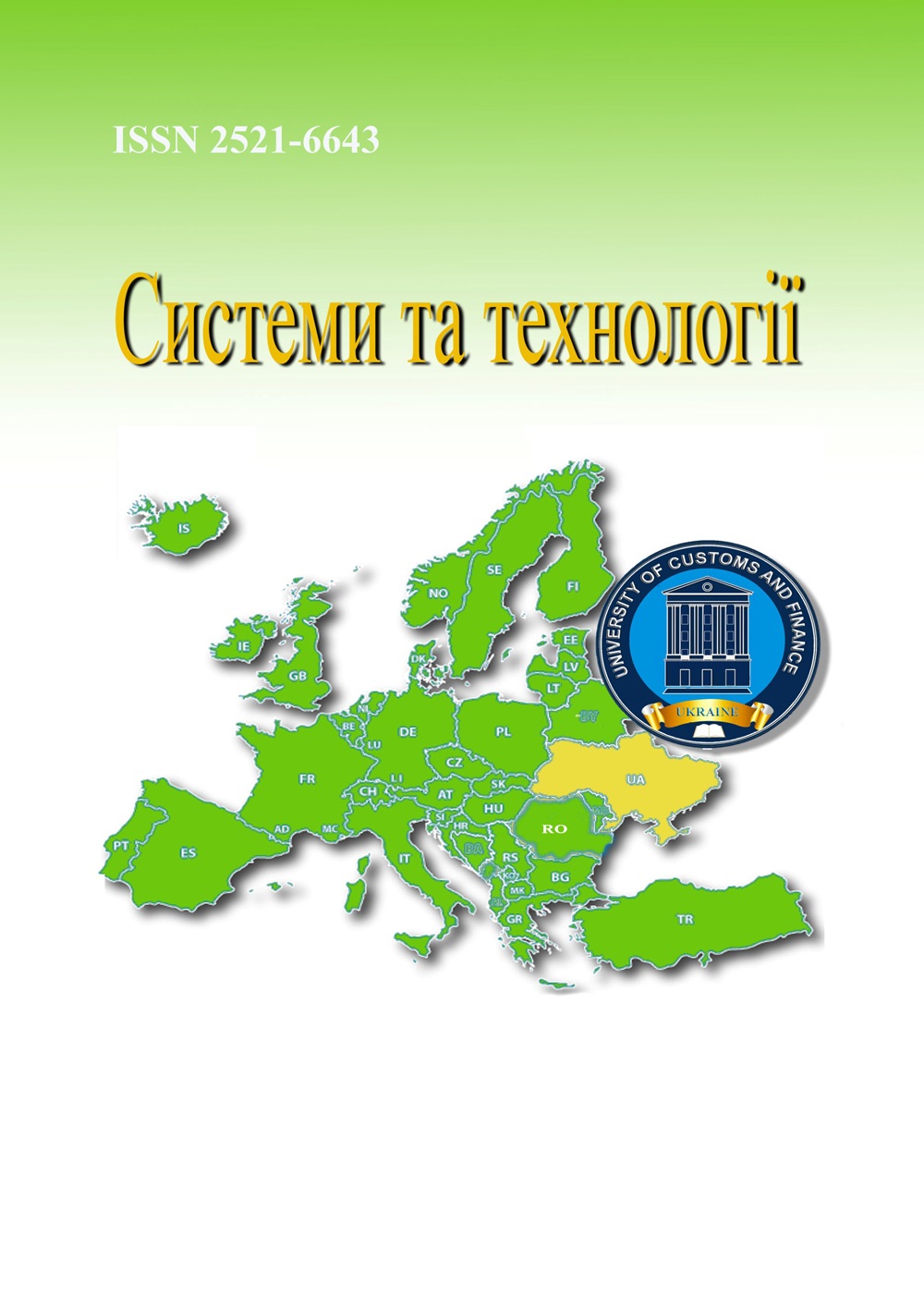DIGITALIZATION OF LOGISTICS PROCESSES, RESOURCE MANAGEMENT AND OPERATIONAL PLANNING IN THE STATE SPECIAL TRANSPORT SERVICE
Abstract
The article deals with the topical problem of digitalization of logistics processes, resource management and operational planning in the conditions of specific tasks of the State Special Transport Service (hereinafter – the State Support Service). The introduction of digital technologies makes it possible to significantly increase the efficiency of managing material and technical resources, reduce decision-making time and optimize internal processes, which is especially important if the tasks of ensuring the continuous functioning of the critical transport infrastructure of the state. The study identifies a number of key initiatives aimed at introducing a single digital logistics and resource management system, geoinformation monitoring of infrastructure facilities, automation of operational planning and response, as well as the development of mobile applications for enhanced personnel coordination. It is noted that the use of geoinformation systems (GIS) makes it possible to visualize and quickly analyze the state of critical transport infrastructure, ensuring timely repair and repair work and increasing the overall safety of transport units.The research methodology involves a comparative analysis of modern digital platforms, mathematical modeling of logistics processes, as well as the use of statistical methods to evaluate the effectiveness of implementation of initiatives. To confirm hypotheses on the impact of digitalization on efficiency and planning accuracy was Experimental modeling was conducted on the basis of real data on the use of resources and vehicles in the units of the State Summer Service.The results demonstrate a reduction in time and resources, as well as increasing the response rate through timely processing of critically important information. On the basis of comparison with previous studies and areas of digital transformation in the military and transport spheres, it is concluded that the proposed measures can ensure a significant increase in the efficiency of the State Support Service. Prospective areas of further research are proposed, including integration with other state and military structures to enhance the interaction and expand the functional capabilities of digital platforms.
References
2. Brandon-Jones A., Burgess N., Slack N. Essentials of Operations Management. Longman (Pearson Education). 2023. 560 с.
3. Klibi W., Martel A. Scenario-based supply chain network risk modeling. 2012. European Journal of Operational Research. Elsevier, vol. 223(3), p. 644-658. DOI: 10.1016/j.ejor.2012.06.027
4. Штельмашук М. С. Цифровізація та автоматизація логістичних процесів: сучасний стан та перспективи. Економіка та суспільство. Вип. 68. 2024. DOI: https://doi.org/10.32782/2524-0072/2024-68-193
5. Kache F., Seuring S. Challenges and opportunities of digital information at the intersection of Big Data Analytics and supply chain management. International Journal of Operations & Production Management. 2017. Т. 37, № 1. С. 10–36. DOI: 10.1108/IJOPM-02-2015-0078
6. Ahuja R., Magnanti T., Orlin J. Network Flows: Theory, Algorithms, and Applications. Upper Saddle River, Prentice-Hall, 1993. 864 с.
7. Law A. M. Simulation Modeling and Analysis. Sixth Edition. New York: McGraw-Hill, 2024. 784 с.
8. Ross S. M. Introduction to Probability Models. 10th ed. Academic Press is an imprint of Elsevier. 2010. 801 с.
9. Milewski R., Smal T. Decision making scenarios in military transport processes. Archives of Transport 45(1). 2018. p. 65-81. DOI: 10.5604/01.3001.0012.0945
10. Montgomery D. C. Design and Analysis of Experiments. John Wiley & Sons, 2021. 656 с.
11. Goodfellow I., Bengio Y., Courville A. Deep Learning. Cambridge: MIT Press, 2016. p.800.
12. James G., Witten D., Hastie T., Tibshirani R. An Introduction to Statistical Learning. New York: Springer, 2021. 617 с. DOI: 10.1007/978-1-0716-1418-1
13. Gunasekaran, Angappa, Yusuf, Yahaya Y., Adeleye, Ezekiel O., Papadopoulos, Thanos, Kovvuri, Dharma, Geyi, Dan’Asabe G. (2018) Agile manufacturing: an evolutionary review of practices. International Journal of Production Research, 57 (15-16). pp. 5154-5174. DOI: 10.1080/00207543.2018.1530478
14. Tang C. S., Tomlin B. The power of flexibility for mitigating supply chain risks. International Journal of Production Economics. 2008. 116(1):12-27. DOI: 10.1016/j.ijpe.2008.07.008
15. Kalantari H., Ghazanfari M., Fathian M. Multi-objective optimization model in a heterogeneous weighted network through key nodes identification in overlapping communities. Computers & Industrial Engineering. 2020. 144:106413. DOI: 10.1016/j.cie.2020.106413
16. Prasad S. Thenkabail. Remote Sensing Handbook – Three Volume Set. Remotely Sensed Data Characterization, Classification, and Accuracies. 2015. p.2000
17. Bowersox D. J., Closs D. J., Cooper M. B. Supply Chain Logistics Management. McGraw-Hill, 2002. P.658.
18. Young R. Humanitarian Logistics: Meeting the Challenge of Preparing for and Responding to Disasters. Transportation Journal 51(3). 2012. 280 с.
19. Kunaka C. Logistics in lagging regions: Overcoming local barriers to global connectivity. World Bank Publications. 2010. p.80.
20. Hao Shi, Fei Wan, Xiaokang Lei. Research on Military Logistics based on Big Data. Advances in Computer Science Research, volume 87. 3rd International Conference on Mechatronics Engineering and Information Technology (ICMEIT 2019). 2019. p. 231–237.
21. Papadopoulos T., Gunasekaran A., Dubey R. Big data and analytics in operations and supply chain management: managerial aspects and practical challenges. Production Planning & Control. 2017. 28(11-12):873-876. DOI:10.1080/09537287.2017.1336795

 ISSN
ISSN 




